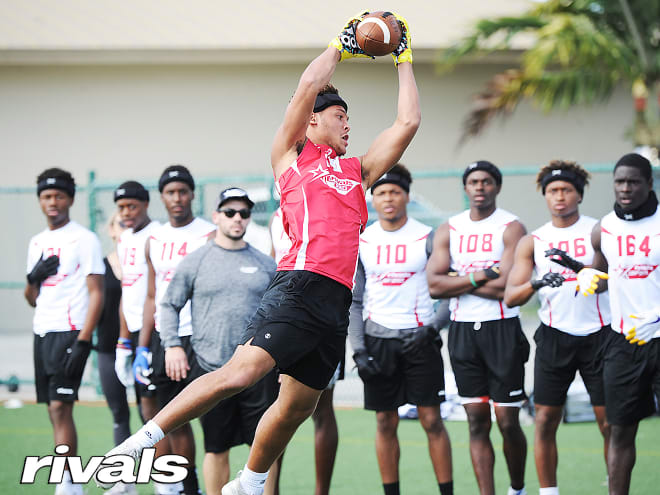Fact or Fiction: Brandon Inniss is the No. 1 player for 2023

National recruiting director Mike Farrell and national recruiting analyst Adam Gorney tackle three topics daily and determine whether they believe the statements or not.
*****
CLASS OF 2021 RANKINGS: Rivals250 | Position | Team | State
CLASS OF 2022 RANKINGS: Rivals250 | Position | Team | State
COVERAGE: Rivals Transfer Tracker | Rivals Camp Series
*****
1. Brandon Inniss is the best player in the 2023 class.
Farrell’s take: FACT. It’s way too early to name a top player based on freshman film, but Inniss is special and could be the best wide receiver in Florida since Jerry Jeudy and that’s heavy stuff. The two quarterbacks, Arch Manning and Malachi Nelson, could end up as 1-2 based on positional importance, but right now Inniss is the best I’ve seen.
Gorney’s take: FICTION. Inniss is great, there’s no doubt about it, and he could definitely end up No. 1 in the class, but when we’re talking about positional value here, I lean toward defensive end Peter Woods from Alabaster (Ala.) Thompson. To accomplish what he accomplished in his freshman season is incredibly impressive because he overpowered offensive linemen years older than him, he lived in the backfield, he closes well and then Woods wraps players up and takes them to the ground. He reminds me of a Robert Nkemdiche-type player who can use his power or his speed or his moves to make life tough for the offense. If he continues to develop, Woods could be in the discussion for No. 1 overall.
2. Granting an extra year of eligibility was the right call by the NCAA.
Farrell’s take: FACT. But it’s going to be messy. With no guarantee that anyone will play anything close to a full season, it had to be done. Now the NCAA needs to move the scholarship limit temporarily to allow for roster management and the real issue is how many players will be run out of programs to make room even with the limit extended. This is going to be ugly, but what else could they do?
Gorney’s take: FACT. It’s the right call, but just like many things surrounding this whole topic, it makes things trickier and more confusing in a lot of ways. I completely understand why the NCAA granted a freeze on eligibility, but what if I’m in the 2020 or 2021 recruiting class and I expected the person at the position I play to be off to the NFL or graduated by the time I get there? There are many issues and questions with this, but I get why the NCAA did it and on balance it’s the right call.
3. Cade Mays should have been granted immediate eligibility.
Farrell’s take: FACT. Yes I know his reasons for transferring to Tennessee weren’t that compelling and his request was before COVID-19 emerged, but in this uncertain time, how can you deny a kid who wants to play back at home? Even if his reasons have nothing to do with being close to loved ones, and who knows if that’s a factor, taking a hard line on Mays while giving everyone an extra year of eligibility across the board because of “uncertain times” makes no sense.
Gorney’s take: FACT. I’m torn on this topic because Mays does not have a really strong argument to be granted immediate eligibility but I also understand there are extenuating circumstances here. Who knows what the real story is but during these times, Mays’ waiver should be revisited and granted. Some high-profile lawyers are now involved so this could get interesting. Let’s remember: Luke Ford did have a legitimate reason to transfer and the NCAA denied it. But that was pre-Covid. The NCAA should just let Mays transfer without penalty and everybody can move on.